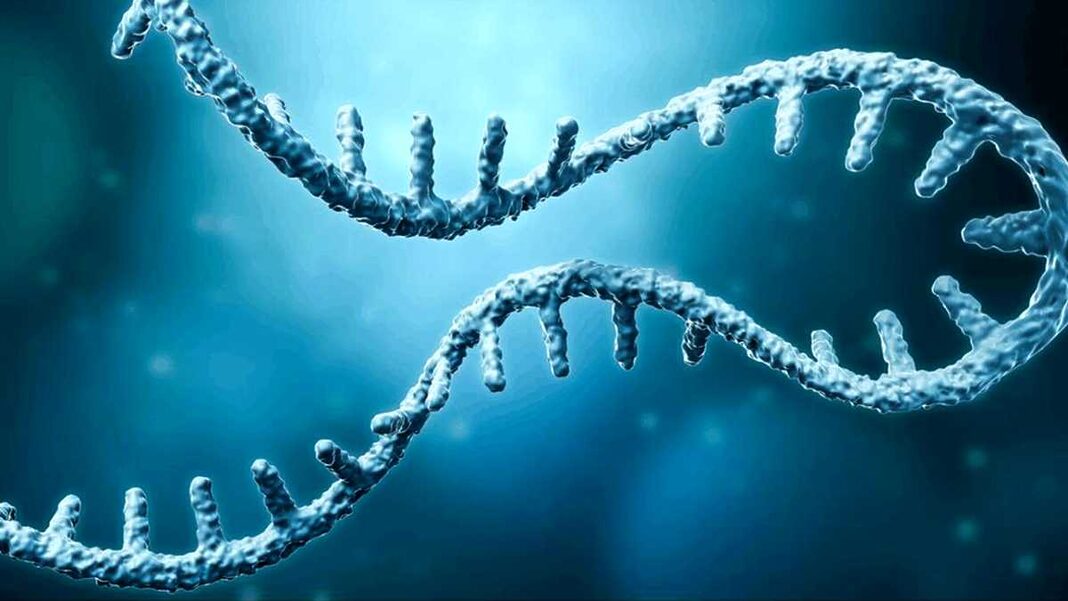Story at-a-glance
- A preprint study led by Dr. Peter McCullough suggests using siRNA and RIBOTACs to target and degrade residual mRNA from COVID-19 vaccines, potentially mitigating long-term health risks associated with persistent spike protein production
- COVID-19 mRNA vaccines have shown wider distribution in the body than initially claimed, raising concerns about unintended effects and the need for an “off switch” to stop ongoing spike protein production
- The study proposes using siRNA and RIBOTACs as potential methods to bind to and degrade vaccine mRNA in cells, offering a targeted approach to prevent adverse events from mRNA-based therapies
- “Long vax” symptoms, similar to long COVID, have been reported following vaccination, including fatigue, brain fog, numbness, and cardiovascular issues, highlighting the need for effective treatments for those affected
- Another study led by McCullough found a significant increase in cerebral thromboembolism risk associated with COVID-19 vaccines compared to other vaccines, leading to calls for a moratorium on their use
A preprint study revealed a potential way to clear out mRNA from COVID-19 shots. The research, led by cardiologist, internist and epidemiologist Dr. Peter McCullough, offers hope for those who are suffering from health damage caused by COVID-19 injections.
“As the world is waking up to nearly two thirds with potential future disease and disability from the long-lasting mRNA coding for the dangerous Wuhan spike protein, the search is on for ways to stop this molecular monster from doing more damage,” McCullough writes.1
The technique involves the use of small interfering RNA (siRNA) and ribonuclease targeting chimeras (RIBOTACs) to “target, inactivate, and degrade residual and persistent vaccine mRNA” and in so doing, help prevent uncontrolled spike protein production while reducing toxicity.2
Technique May Help Mitigate Damage Triggered by mRNA COVID Shots
Pfizer-BioNTech and Moderna studies show that mRNA from COVID-19 shots, which is carried by tiny particles called nanolipids, does not stay only in the shoulder muscle or nearby lymph nodes as initially claimed. Instead, the mRNA can be found in various tissues in the body, raising safety concerns.
There is a worry that this mRNA might integrate into the body’s DNA or cause unintended spike protein production, which could be harmful. To address these concerns, scientists are looking at ways to eliminate this leftover mRNA to stop the production of the spike protein, which the COVID-19 shot mRNA helps produce.
“Without any way to turn off the messenger RNA, we think every single messenger RNA shot, because it’s been made synthetic and resistant to human breakdown, is going to make people progressively sick,” McCullough says. “We have to find a way to get this out of the body … We’re gonna need an off switch for this.”3
McCullough’s study highlights “emerging concerns regarding the wide systemic biodistribution of these mRNA vaccines leading to prolonged inflammatory responses and other safety concerns.”4 According to the scientists, “The stability of mRNA vaccines, their pervasive distribution, and the longevity of the encapsulated mRNA along with unlimited production of the damaging and potentially lethal Spike (S) protein call for strategies to mitigate potential adverse effects.”5
The study reviews a strategy involving siRNA and RIBOTACs. “It may seem unfathomable for doctors to inject more RNA to deactivate Pfizer and Moderna synthetic mRNA that has accumulated in the body after multiple injections,” McCullough says. “However, siRNA used today in my practice (patisiran, inclisiran) appears to be safe and well-tolerated only notable for injection site reactions.”6
siRNA and RIBOTACs May Act as Off Switch for COVID mRNA Shots
siRNA is a type of RNA molecule that can specifically bind to and degrade messenger RNA (mRNA) in cells. This process prevents the mRNA from being used to produce proteins. siRNA works by entering the cell and becoming part of a complex called the RNA-induced silencing complex (RISC).
Within RISC, the siRNA pairs with its matching mRNA sequence and guides the complex to cut and destroy the target mRNA, stopping protein production. siRNA is used in research and therapeutic applications to silence specific genes, helping to study gene function and treat diseases caused by overactive or harmful genes.
RIBOTACs, meanwhile, are synthetic molecules designed to bind to specific RNA molecules and recruit natural cellular enzymes, called ribonucleases, to degrade the target RNA. RIBOTACs enter the cell and attach to both the target RNA and the ribonuclease enzyme. This binding brings the enzyme into close proximity with the target RNA, allowing the enzyme to cut and degrade the RNA.
RIBOTACs are used to specifically target and destroy RNA molecules that are involved in disease processes, providing a precise way to reduce the levels of harmful proteins produced by these RNAs. According to the study, “The targeted nature of siRNA and RIBOTACs allows for precise intervention, offering a path to prevent and mitigate adverse events of mRNA-based therapies.”7
The study described two methods to target and degrade residual and persistent COVID-19 shot mRNA, including siRNA Therapy (A) and RIBOTAC neutralization (B):8
“A: siRNA targeted against COVID-19 vaccine mRNA enters the vaccinated cell via LNPs [lipid nanoparticles], where it incorporates into the RISC. The siRNA in RISC binds to the complementary sequence of the target vaccine mRNA and cleaves it, thus suppressing spike protein production.
B: RIBOTACs targeted against COVID-19 vaccine mRNA enter the vaccinated cell via LNPs, where they bind to both the target vaccine mRNA and endogenous RNase. This results in RNase-mediated vaccine mRNA degradation and the suppression of spike protein production.”
“We use these small interfering RNAs already in practice,” McCullough said. “There’s one called Patisiran, the other one, Inclisiran. I use them in my practice. They only last in the body a few days. They bind up messenger RNA to inactivate it … We hope that some molecular technology companies can pick this up and consider this.”9
Analysis by Dr. Joseph Mercola






